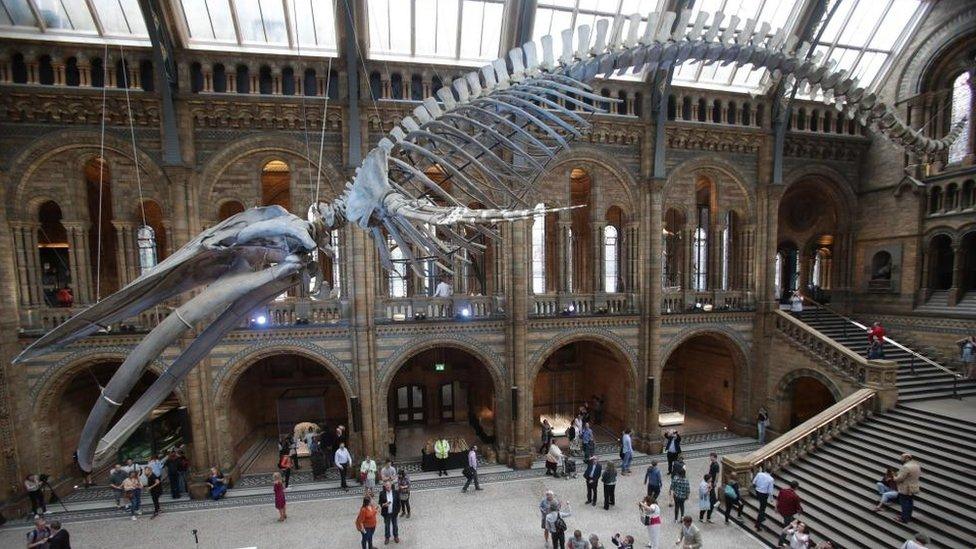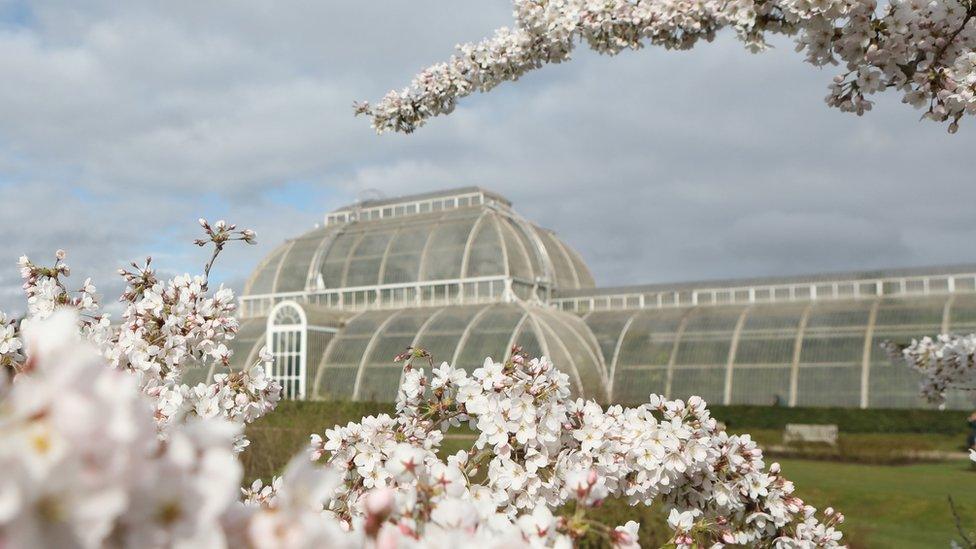UK tourism: Visitor attractions still suffering from pandemic effects
- Published

Indoor attractions like the Natural History Museum saw a strong recovery in 2022
UK visitor attractions are suffering from the effects of the pandemic due to fewer tourists travelling from abroad, an industry body has warned.
Millions returned to museums and galleries in 2022 as Covid restrictions ended, the Association of Leading Visitor Attractions (ALVA) said.
But fewer international tourists meant visitor levels were still almost a quarter lower than before the pandemic.
The Crown Estate, Windsor Great Park, remained the most popular attraction.
Indoor sites saw a 176% increase in the number of people visiting compared to the previous year, ALVA said.
For much of 2021 facemasks and social distancing had been required at inside venues to prevent the spread of coronavirus.
Big London attractions with no entry fee like the Natural History Museum, British Museum and Tate Modern saw their numbers recover by around 200%.
Overall visits to British attractions increased 69% compared to 2021, but they saw 37.8 million fewer people walk through their doors than in 2019.
ALVA, which represents more than 2,200 sites, puts the 23% shortfall down to lower levels of tourism, especially from China and east Asia.

The Crown Estate, Windsor Great Park, was the most visited UK attraction in 2022 - the year of Queen Elizabeth's Platinum Jubilee and death

The top 10 list was dominated by London attractions, including the National Gallery in Trafalgar Square

The Tower of London was the most visited major attraction with an entry fee in 2022
Despite a very busy Christmas period, Bernard Donoghue, director of ALVA, warned the industry was "still experiencing the tourism equivalent of 'long Covid'" because of fewer holidaymakers coming to the UK.
He later apologised for making the 'inappropriate' comparison after receiving complaints from long Covid advocacy campaigners.
Although there are ongoing challenges, he said he was "confident that [tourists] will return this year and we will see a continuing healthy recovery".
The figures also reveal people are opting for attractions which are free amid the cost-of-living crisis: places which charged an entry fee saw a recovery of 101% - but free sites had a 183% increase.
Mr Donoghue also said rail strikes had impacted people visiting theatres - particularly over Christmas.
He added he was confident the Chinese market would come back in 2023, driving "really strong growth".
London dominated the top ten list but popular spots around the UK saw growth.
In Scotland, the most popular attraction was the National Museum in Edinburgh. In Northern Ireland, it was Titanic Belfast and in Wales it was Bodnant Garden in Conwy.
The top 10 UK visitor attractions 2022
1. The Crown Estate, Windsor Great Park, Berkshire - 5,636,844
2. Natural History Museum (South Kensington)- 4,654,608
3. The British Museum - 4,097,253
4. Tate Modern - 3,883,160
5. Southbank Centre - 2,947,155
6. The National Gallery - 2,727,119
7. V&A South Kensington - 2,370,261
8. Somerset House - 2,346,580
9. Science Museum - 2,334,930
10. Tower of London - 2,020,121
The BBC changed the headline of this article after Mr Donoghue retracted his comparison between the state of the industry and long Covid.
- Published18 March 2022

- Published31 March 2021
